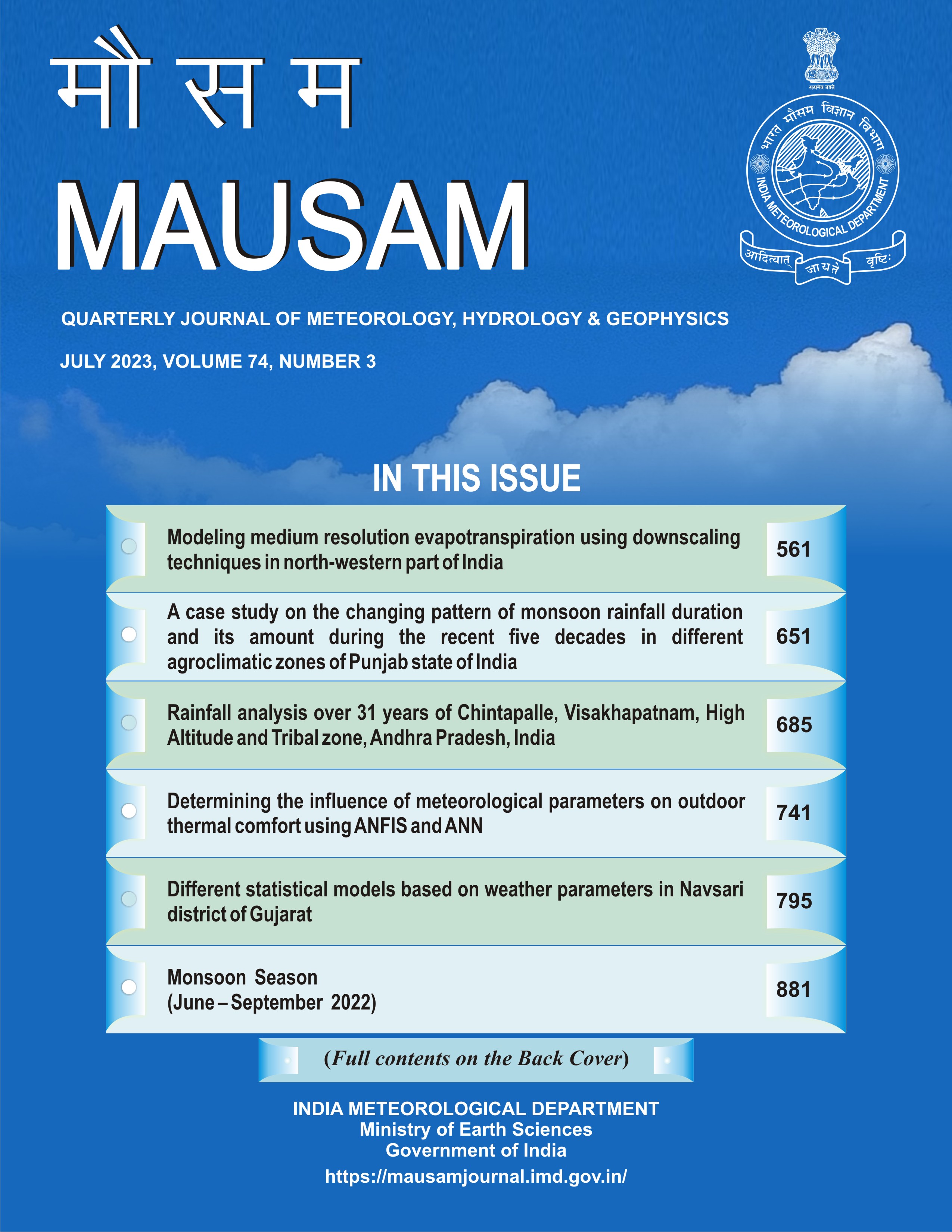Modelling spatiotemporal tendencies of climate types by Markov chain approach : A case study in Sanliurfa province in the south-eastern of Turkey
DOI:
https://doi.org/10.54302/mausam.v74i3.872Abstract
Identification of spatiotemporal tendencies of climate types may help water managers mitigate the negative impacts of droughts on water-demanding sectors. The primary objective of this study was to figure out the spatiotemporal tendencies of climatetypes in Sanliurfa province by using Erinc’s aridity index (EDI). To that end, long-term (1965-2018) annual precipitation and average annual maximum temperature series of meteorological stations were obtained and utilized to calculate the EDI series on a yearly basis. The EDI series of each station was divided into three periods, non-overlapping and successive, i.e., P1 (1965-1981), P2 (1982-1999) and P3 (2000-2018). Outliers were detected, andremoved from the EDI series; missing data were completed by regression analysis. The Markov transition probability matrix of the climate classes for the three periods was estimated for each station. Maps of the initial probability vectors and steady-state probabilities for the three periods of each climate class were generated by the inverse distance-weighted technique. Hypsometric curves for each climate class, as well as period, were developed and areal coverage of occurrence probabilities (OP) was determined. Results indicated that, as time progressed, the areal extent of severe-arid and arid climatic classes continued consistently to spread from the south to the north. Areas of semi-arid climate type showed a slight tendency towards the arid-climate type. Construction of large dams in the region could not prevent the shifts in the climate in favour of developing arid zones. The humid climate class is likely to vanish away in the future. Research led us to conclude that the expansion of the aridzone from south to northhas been alarming in terms of the adequacy of water resources. It is strongly recommended that spatiotemporal climate change studies should be periodically conducted in tandem with forest management practices for the region.
Downloads
Published
How to Cite
Issue
Section
License
Copyright (c) 2023 MAUSAM

This work is licensed under a Creative Commons Attribution-NonCommercial 4.0 International License.
All articles published by MAUSAM are licensed under the Creative Commons Attribution 4.0 International License. This permits anyone.
Anyone is free:
- To Share - to copy, distribute and transmit the work
- To Remix - to adapt the work.
Under the following conditions:
- Share - copy and redistribute the material in any medium or format
- Adapt - remix, transform, and build upon the material for any purpose, even
commercially.



